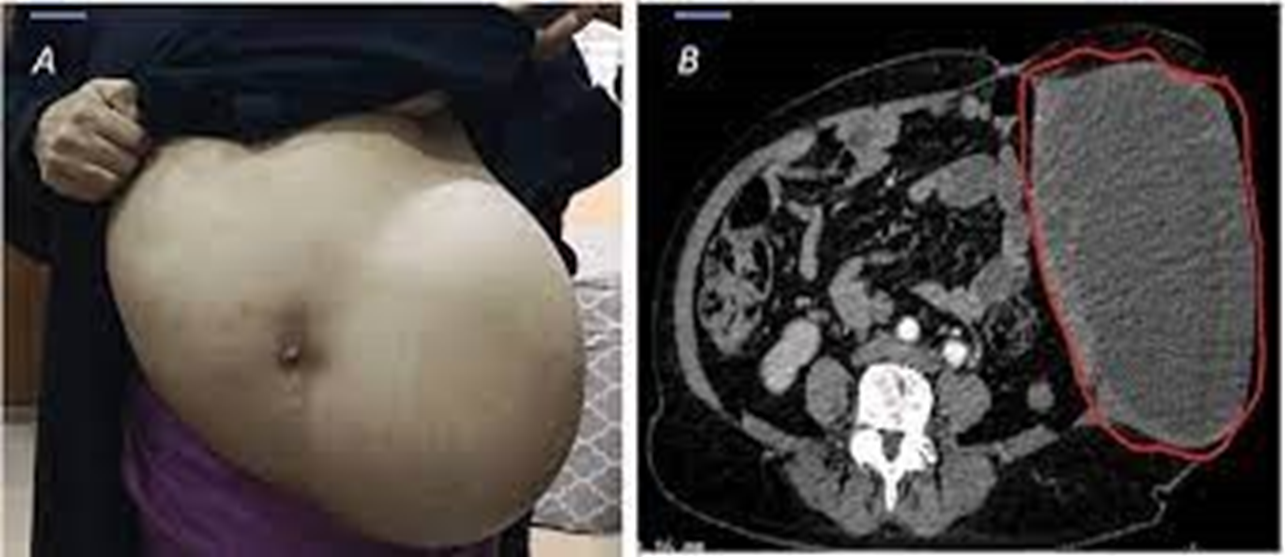A nurse is gathering information from a 1-year-old child who has been diagnosed with Wilms’ tumor. Which of the following symptoms should the nurse anticipate?
Jaundice
Abdominal mass
Swollen joints
Diarrhea
The Correct Answer is B
Choice A rationale
Jaundice, a yellowing of the skin and eyes, is not typically a symptom of Wilms’ tumor. It is more commonly associated with conditions that cause liver dysfunction.
Choice B rationale
An abdominal mass is one of the most common symptoms of Wilms’ tumor. Parents or healthcare providers may feel a lump or swelling in the child’s abdomen.
Choice C rationale
Swollen joints are not a typical symptom of Wilms’ tumor. They are more commonly associated with conditions that affect the joints, such as juvenile arthritis.
Choice D rationale
Diarrhea is not a typical symptom of Wilms’ tumor. It is more commonly a symptom of gastrointestinal illnesses.

Nursing Test Bank
Naxlex Comprehensive Predictor Exams
Related Questions
Correct Answer is D
Explanation
Choice A rationale
Rapid respirations are not typically a manifestation of hypoglycemia. They are more commonly associated with conditions that cause metabolic acidosis, such as diabetic ketoacidosis.
Choice B rationale
Diminished reflexes are not a typical manifestation of hypoglycemia. They may be seen in conditions affecting the nervous system.
Choice C rationale
Acetone breath is not a manifestation of hypoglycemia. It is a sign of ketoacidosis, which is a complication of hyperglycemia, not hypoglycemia.
Choice D rationale
Diaphoresis, or sweating, is a common symptom of hypoglycemia. The body produces sweat as part of the sympathetic nervous system’s response to hypoglycemia.
Correct Answer is A
Explanation
Choice A rationale:
Weighing the infant every day on the same scale at the same time is crucial in monitoring excess fluid volume in congestive heart failure. Sudden weight gain can indicate fluid retention, a common sign of worsening heart failure. Daily weight monitoring helps in early detection and timely intervention.
Choice B rationale:
Notifying the physician when weight gain exceeds more than 20 g/day might be too late for intervention. Daily weight monitoring is essential to detect trends and intervene promptly to manage excess fluid volume.
Choice C rationale:
Placing the infant in a car seat to minimize movement is not directly related to managing excess fluid volume in congestive heart failure. It is essential for safety during transportation but does not address the nursing diagnosis.
Choice D rationale:
Administering digoxin as ordered by the physician is a medical intervention for congestive heart failure. While important, the nursing diagnosis is related to excess fluid volume, and the focus should be on nursing interventions such as monitoring daily weights.
Whether you are a student looking to ace your exams or a practicing nurse seeking to enhance your expertise , our nursing education contents will empower you with the confidence and competence to make a difference in the lives of patients and become a respected leader in the healthcare field.
Visit Naxlex, invest in your future and unlock endless possibilities with our unparalleled nursing education contents today
Report Wrong Answer on the Current Question
Do you disagree with the answer? If yes, what is your expected answer? Explain.
Kindly be descriptive with the issue you are facing.
